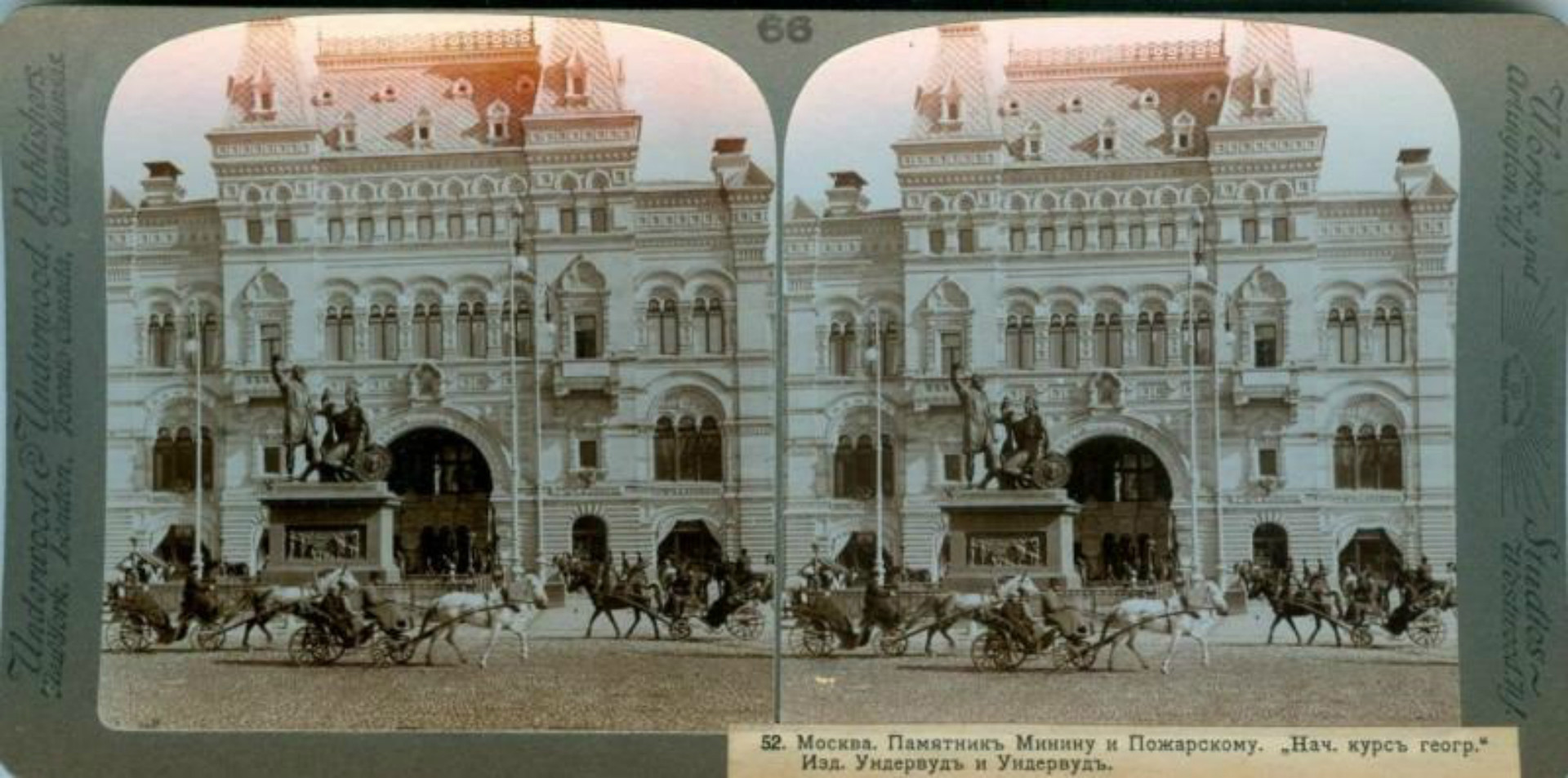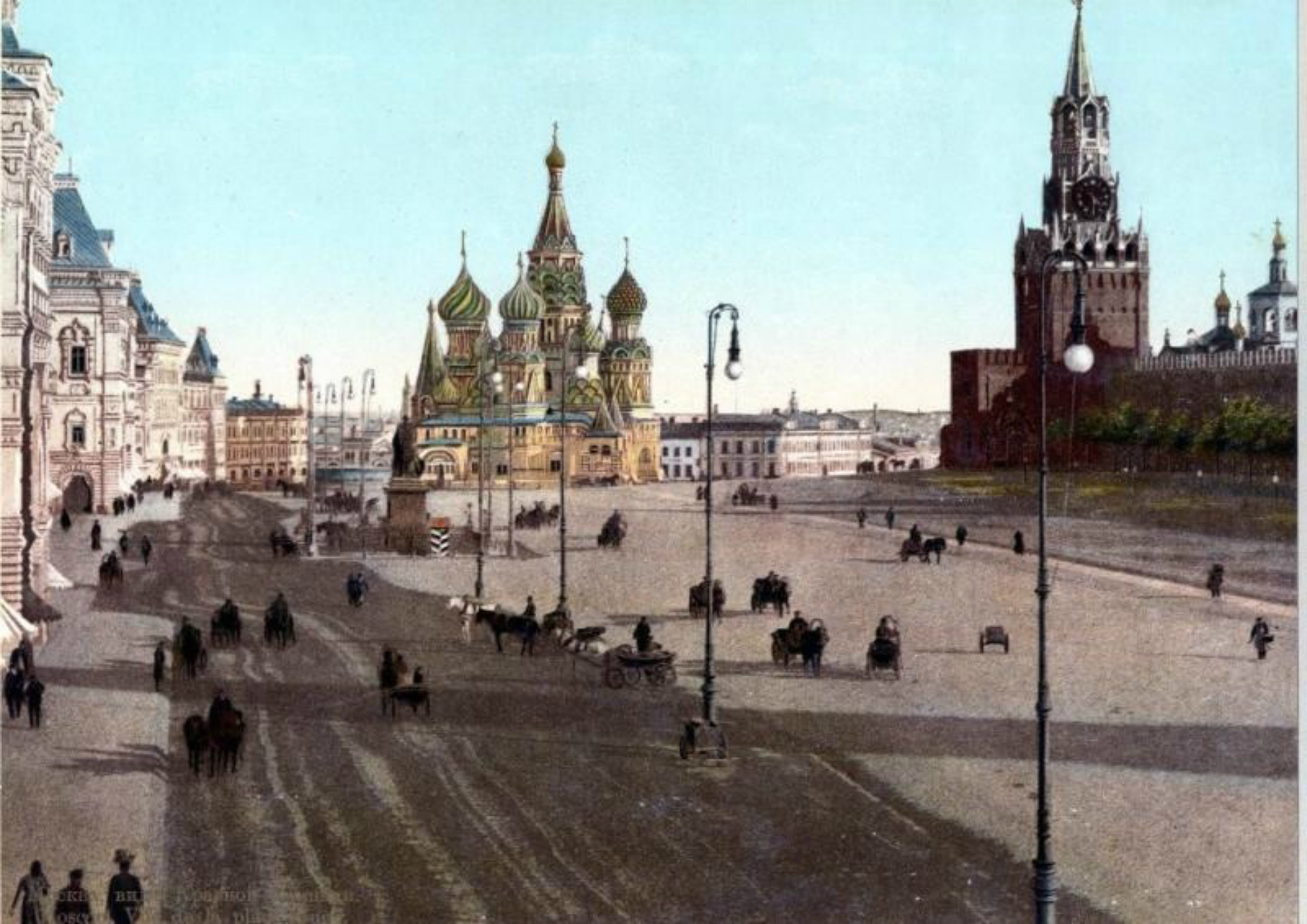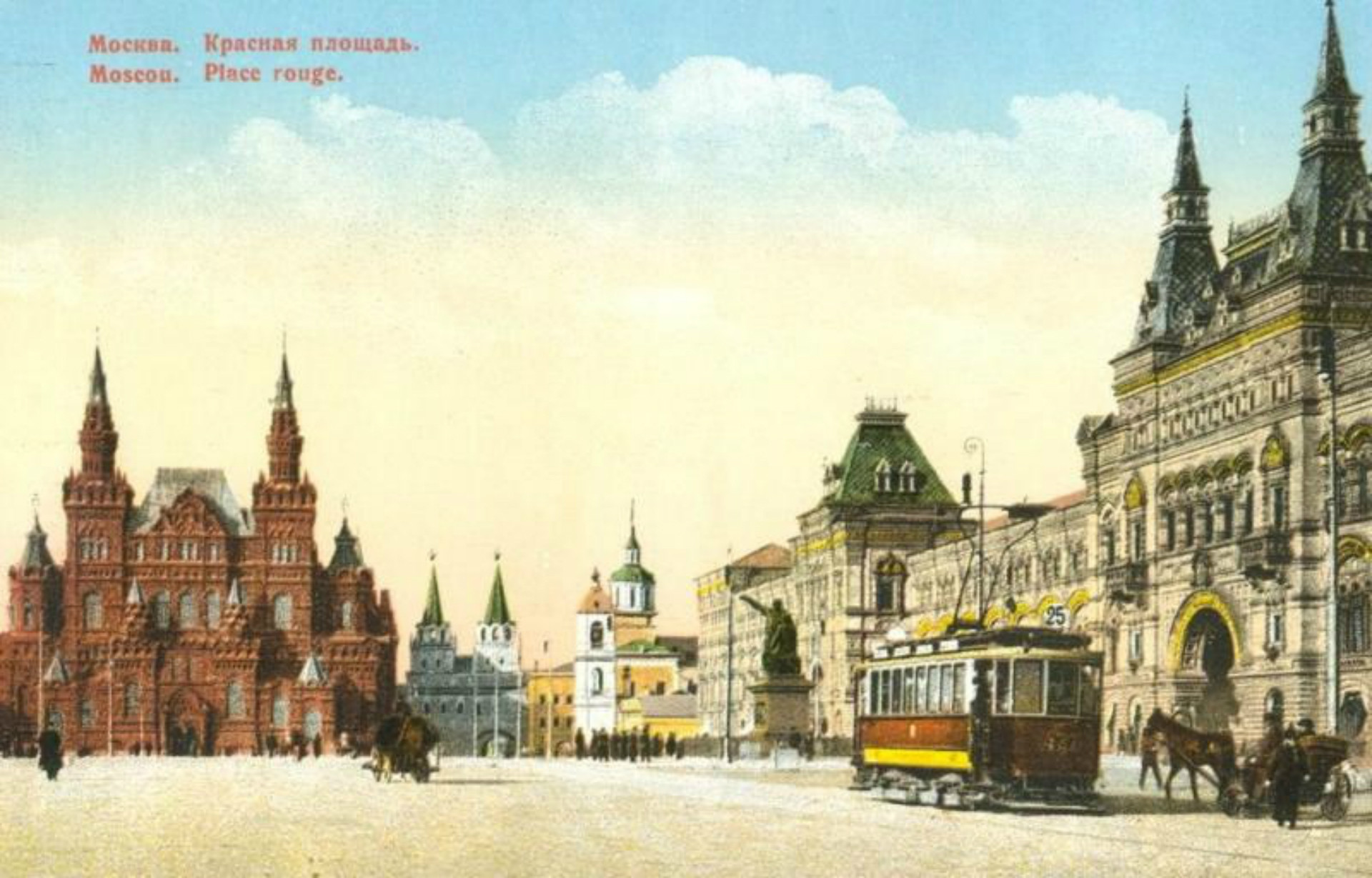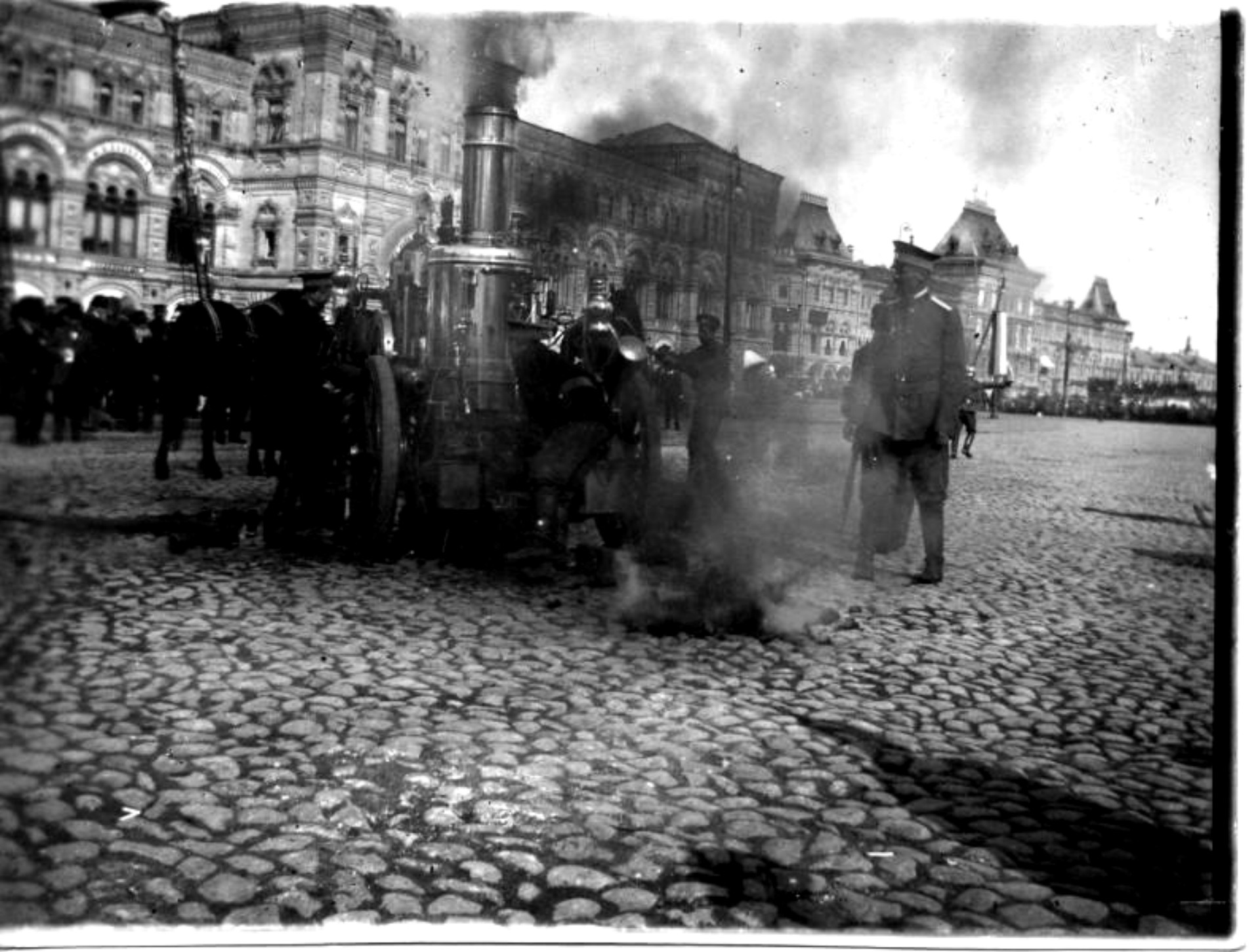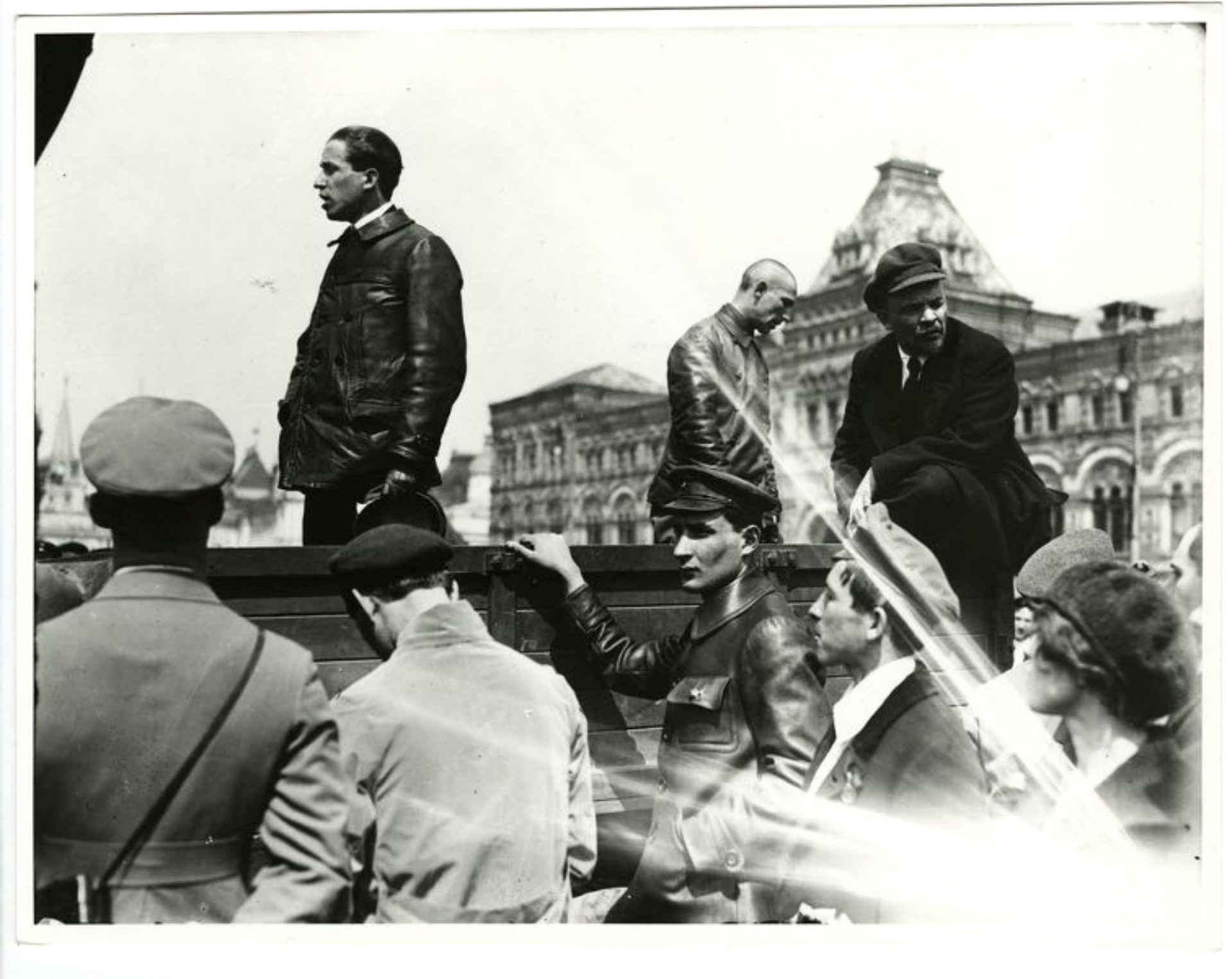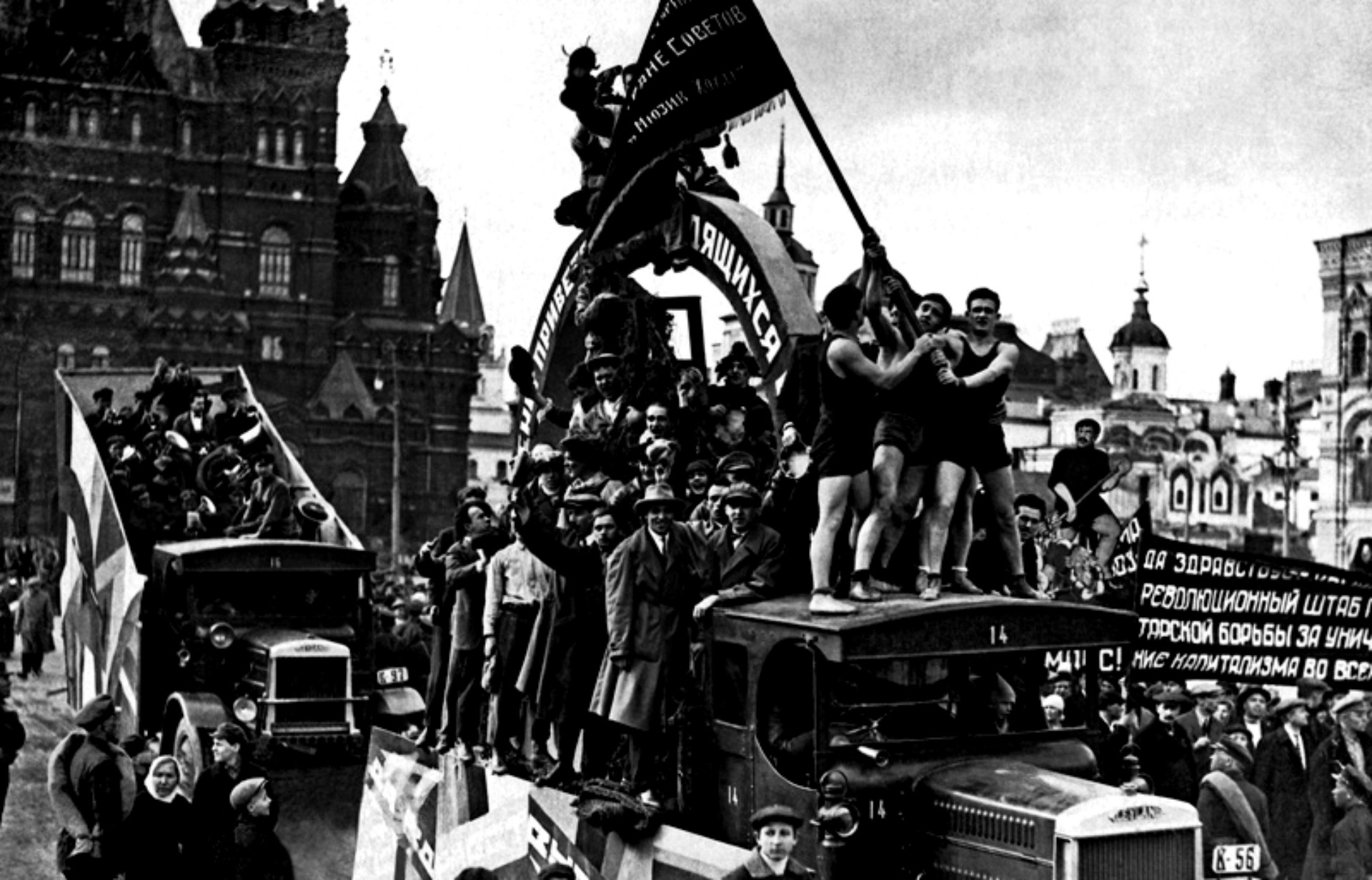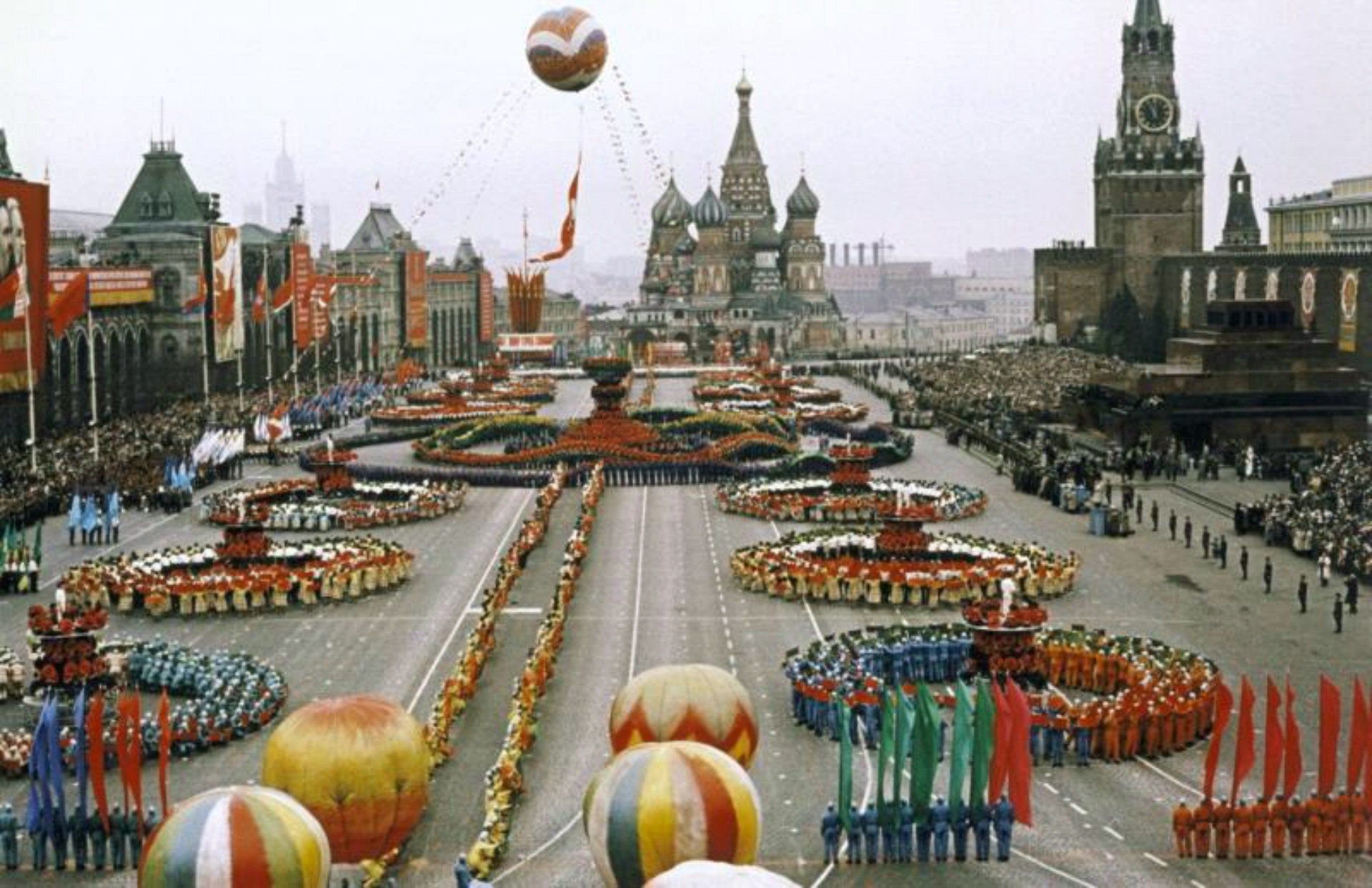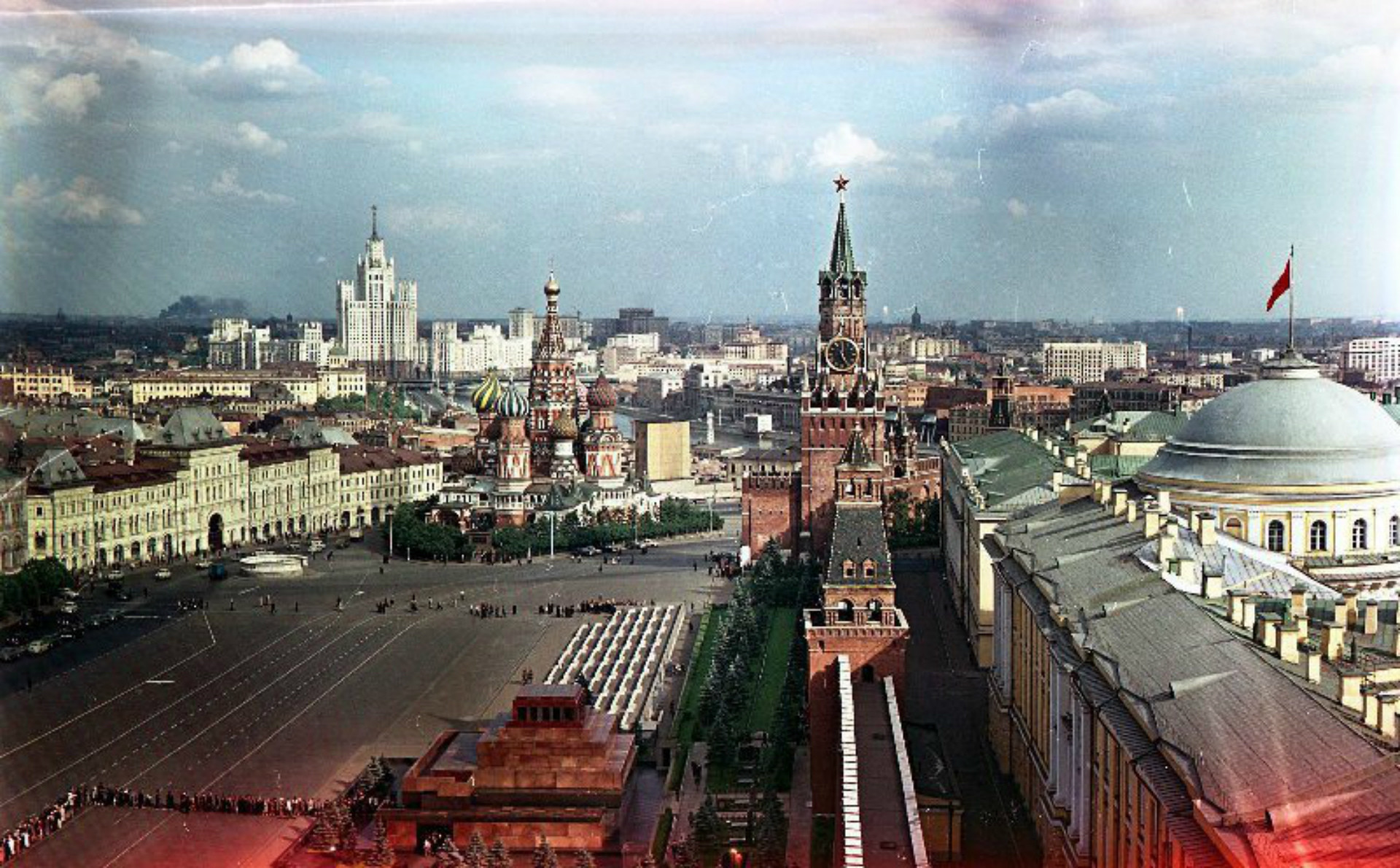The last 100 years in the history of Moscow’s Red Square
A century ago Moscow’s main square already featured the famous Monument to Prince Dmitry Pozharsky and Kuzma Minin. It was unveiled to the public in 1818 to commemorate an all-Russian volunteer army gathered by Minin and Pozharsky that liberated Moscow in 1612 from Polish forces that had occupied Muscovy during the Time of Troubles. However, looking at the above picture taken in the 1900s, you notice that the monument stood not in its current place next to Saint Basil's Cathedral! Back at that time it was sited just in front of the GUM department store; only in 1931 was it moved to provide more space for Soviet parades and demonstrations.
At the turn of the century the square became less of a market place (which it used to be before) and more of a place for hosting public events and enjoying an afternoon stroll. In 1892 the authorities even installed electric lights here, which are visible in this 1900s picture.
Another interesting thing to observe is that apart from roaming horse carriages the square was bisected by a tram line! It was established in 1909 and naturally provoked huge public discussion until it was removed in 1930.
It is hard to image now, but in 1914 even firefighting equipment was presented to the public here. Not very entertaining though…
After the October revolution in 1917 the square became a place of public celebrations and discussions. The first such event was International Workers’ Day in 1918. The following year the square saw the first Red Army parade, where the leader of the new country Vladimir Lenin spoke to the nation from the top of a truck (pictured above).
In the coming years military parades became an inseparable part of the November 7 annual celebration of the October revolution. In 1923 the parade was filmed for the first time from the air.
But straight after 1945, Red Square became the main venue for annual celebrations of the victory of the Soviet Union over Nazi Germany in the Great Patriotic War. Parades, fireworks and an overwhelming sense of unity have prevailed here ever since. Just imagine how many people have attended these parades over the last decades!
The May 1 (International Workers’ Day) and May 9 (Victory Day) parades became a sort of public ritual. Media outlets around the Soviet Union broadcasted them live. The schedule of these events didn’t change much over the years. On May 1, for example, it was common for government officials to stand silently listening to a presenter congratulating the public and people as they paraded with flags and posters praising state leaders.
The square also became a burial place for the country’s leaders. Apart from Lenin, who has “rested” here since 1924, more than 400 individuals were buried outside of the Kremlin’s walls by 1984. These included not only Communist party leaders, but also other outstanding personalities, like cosmonauts.
After the fall of the U.S.S.R. the square became more open, with people gathering here not only on official holidays. It has hosted concerts of many Western musicians and seen Russian leaders together with heads of other states. In 1994, for example, the Queen of England Elizabeth II visited Russia – marking Russia’s break with its Communist past. These memorable moments in the history of Red Square truly make Moscow’s central plaza one of the most loved places among Russians themselves and guests of the country. History is in the air here, waiting to be breathed in!
If using any of Russia Beyond's content, partly or in full, always provide an active hyperlink to the original material.
Subscribe
to our newsletter!
Get the week's best stories straight to your inbox
